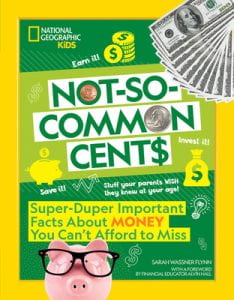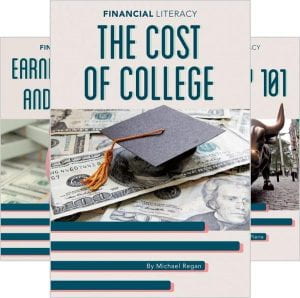 Flynn, Sarah Wassner. Not So Common Cent$: Super-Duper Important Facts About Money You Can’t Afford to Miss. National Geographic Kids, 2023. 978-1-426-37328-2. 160 p. $14.99. Grades 3-6.
Flynn, Sarah Wassner. Not So Common Cent$: Super-Duper Important Facts About Money You Can’t Afford to Miss. National Geographic Kids, 2023. 978-1-426-37328-2. 160 p. $14.99. Grades 3-6.
In full-color, excited ‘did you know this?’ National Geographic style, Not So Common Cent$ introduces readers to money: its history; its creation and evolution; its growth worldwide; and how to make wise money decisions by working, saving, investing, and philanthropy. Financial independence is the goal, because with it, “not only will you have more choices in life, but you’ll also be in a better position to support yourself and others and contribute to your community” (9). The book answers questions like: What makes a coin valuable? When we run out of money, why can’t we just print more? How do countries make money? How does bitcoin work? And of course, money myths and ‘weird but true’ facts. Although this browseable nonfiction book offers just short bursts of information, that information is enlightening and can lead readers to further questions and learning.
THOUGHTS: A great book for curious kids and a fun way to ease kids into financial literacy.
332.4 Money

